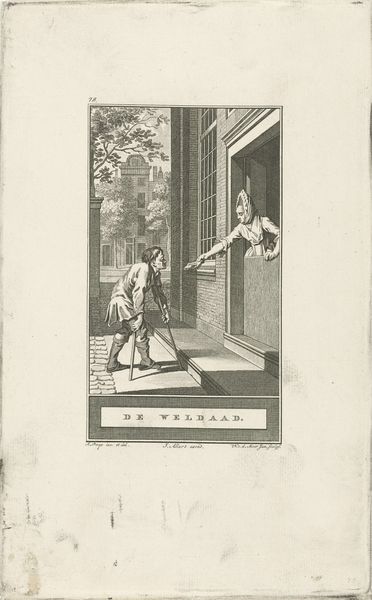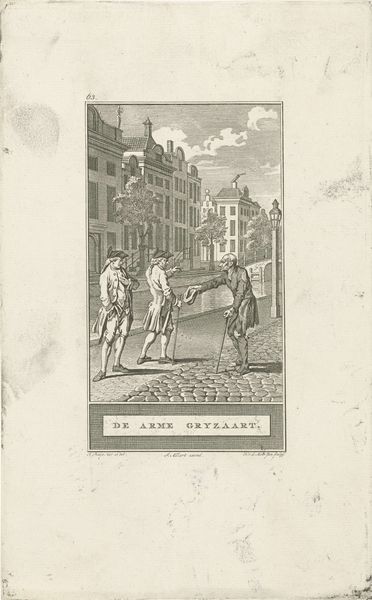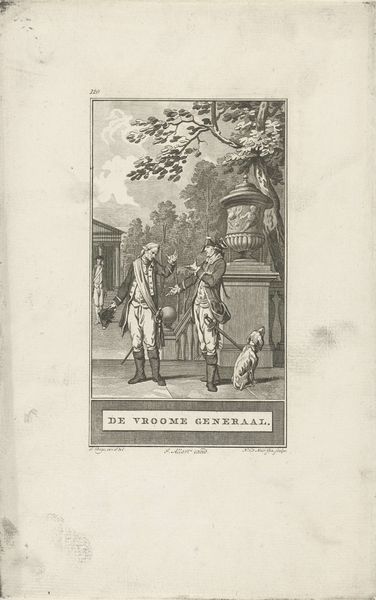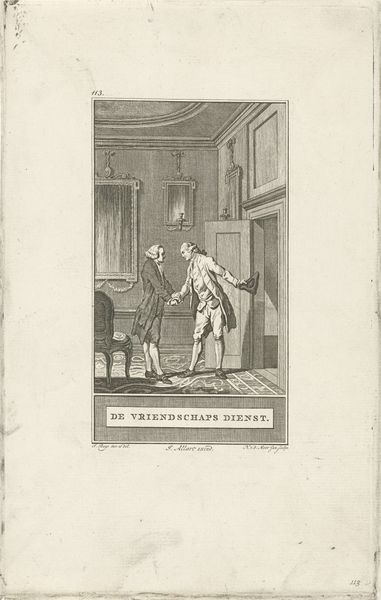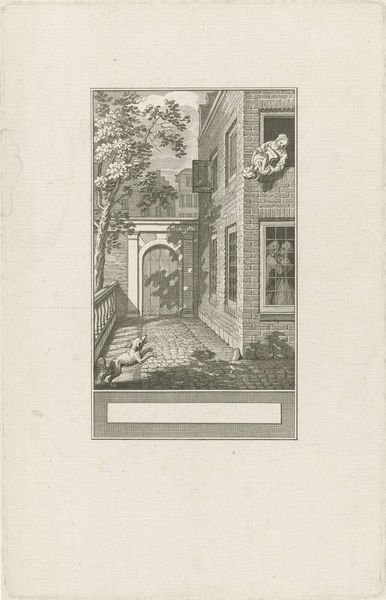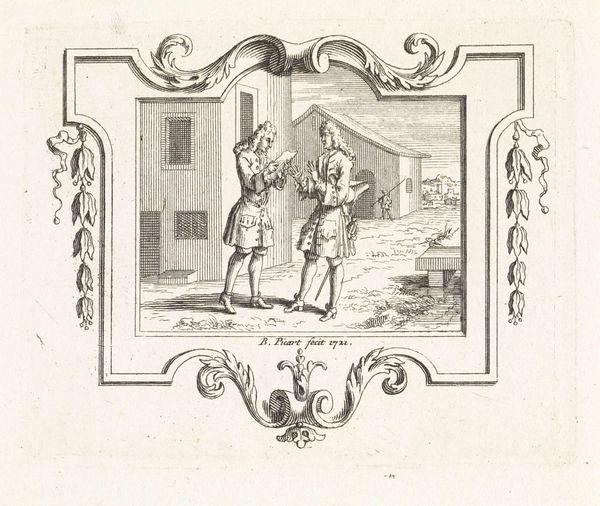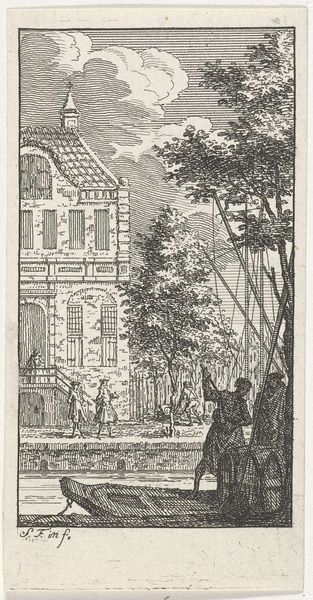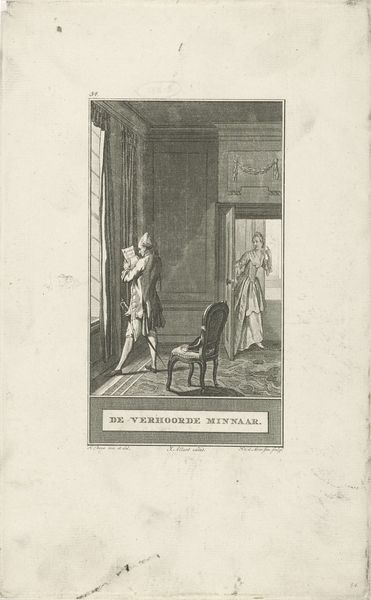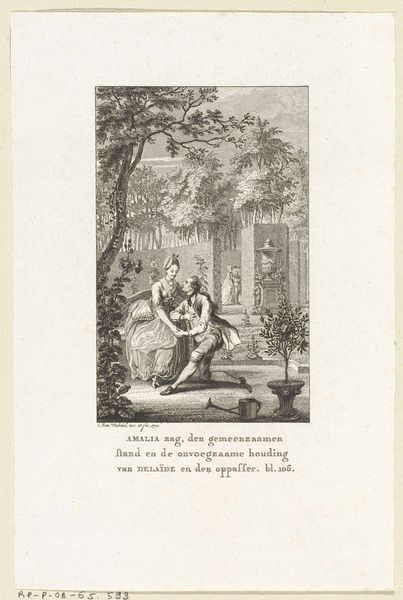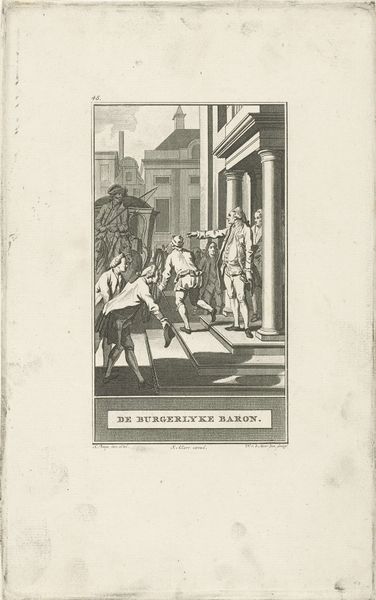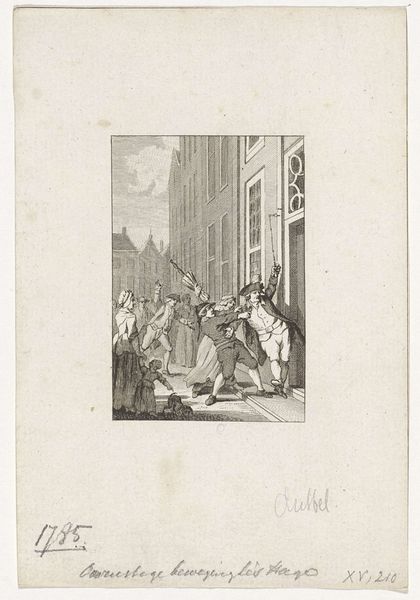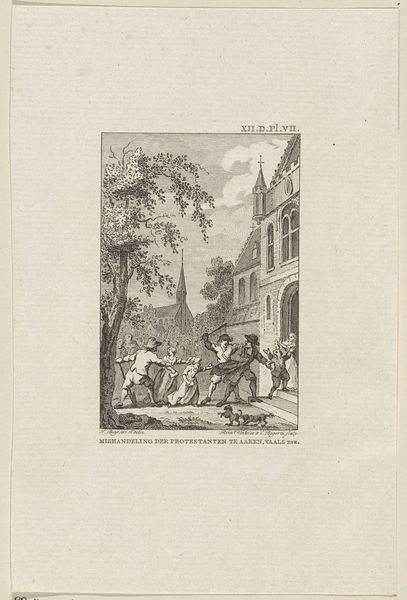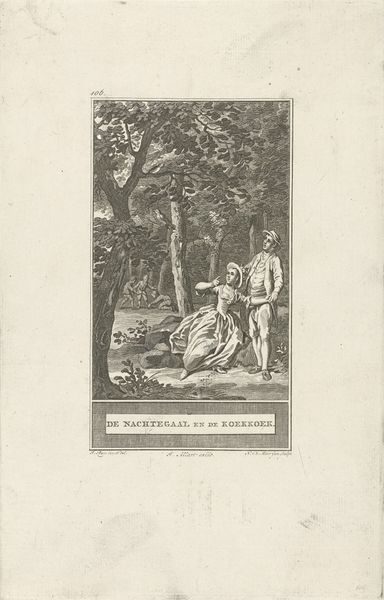
Dimensions: height 251 mm, width 155 mm
Copyright: Rijks Museum: Open Domain
Editor: So, here we have "The Usurer" by Noach van der Meer the Younger, dating from around 1780. It’s an engraving, a small scene, but it feels much larger, somehow. It's so full of little details. How do you interpret this work, especially with the title implying wrongdoing? Curator: This piece truly speaks through symbols of its time. Look at the clothing, the architecture. They point to a very specific social context, late 18th-century Dutch society, and what would have been considered…acceptable. But the artist titled it “The Usurer.” Why? Editor: That's what I'm wondering! Is the outstretched arm suggesting…an unfair offer? Or maybe the partially constructed building behind him? Curator: Precisely! Buildings represent progress and prosperity, but this one is unfinished. This can symbolize broken promises, debts incurred… Observe how the figures interact. Who appears dominant? Who is subordinate? Editor: The figure on the right definitely has a… confidence about him. He gestures broadly, almost possessively, towards the building. It is pretty sinister! Curator: Consider the deeper narrative here. Is the artist judging wealth accumulation, or is he illustrating a social ill? The image becomes a powerful commentary when you link it to shared cultural anxieties of that time. And perhaps, anxieties that remain even now? Editor: That’s fascinating. Seeing the "usurer" not just as a portrait of a person, but as an emblem of larger societal concerns… that changes everything. Curator: Exactly! The artist’s enduring legacy is in his subtle translation of complex human themes into readily accessible symbolic visual language. It reflects continuity through changing social structures. Editor: This has completely opened my eyes to what details I should pay more attention to in art! It all makes sense now.
Comments
No comments
Be the first to comment and join the conversation on the ultimate creative platform.
